20+ Sample New Baby Checklists
-
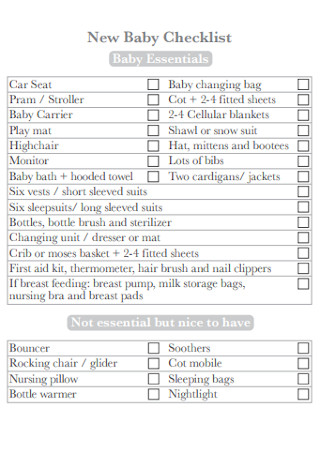
New Baby Checklist Format
download now -
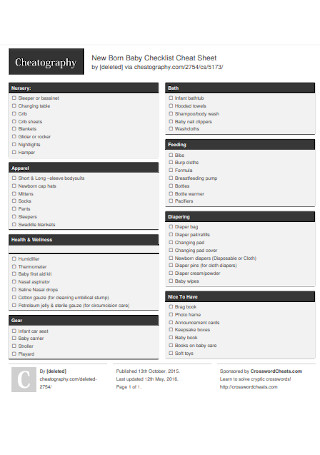
New Born Baby Checklist Cheat Sheet
download now -

Newborn Channel Program Checklist
download now -
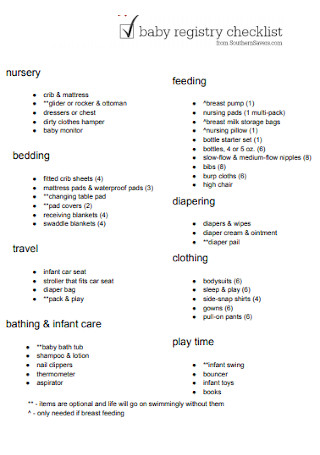
Baby Feeding Registry Checklist
download now -
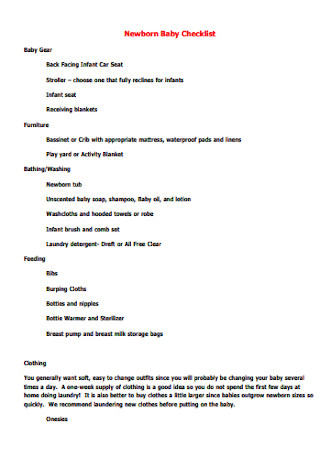
Newborn Baby Checklist
download now -

Baby Child Care Checklist
download now -
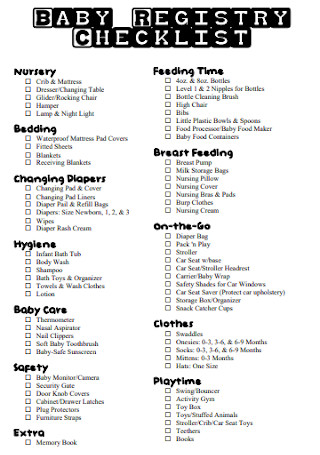
Sample Baby Registry Checklist
download now -
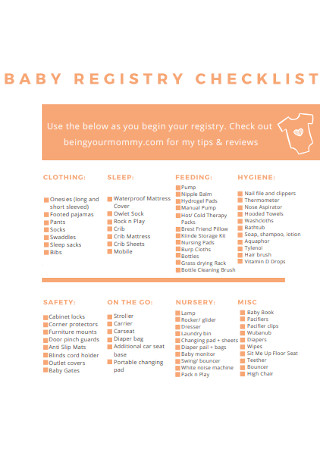
Standard Baby Registry Checklist
download now -
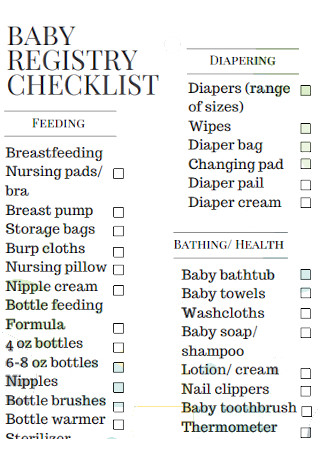
New Baby Health Checklist
download now -
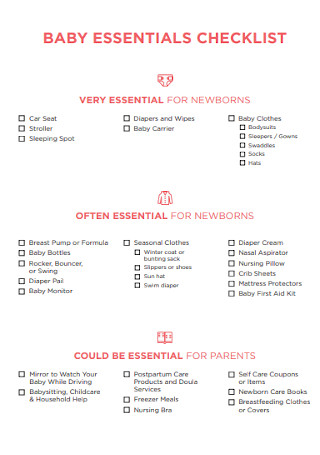
New Baby Essential Checklist
download now -

New Baby Shower Checklist
download now -
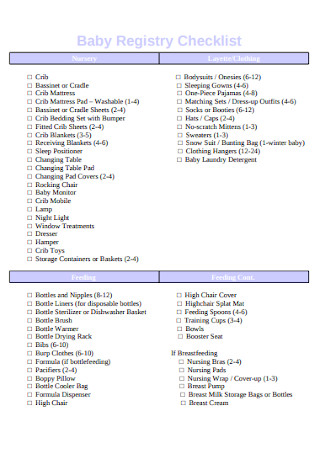
Baby Clothing Checklist
download now -
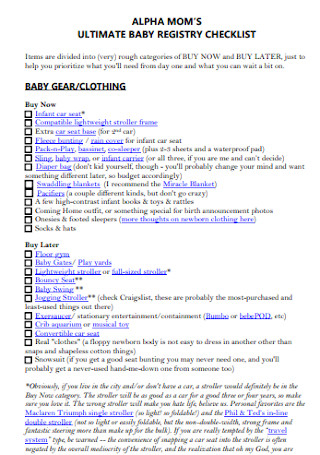
Baby Moms Registry Checklist
download now -
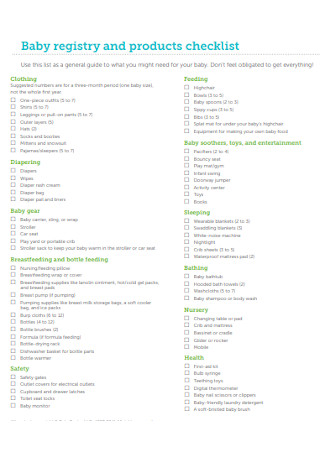
New Baby Products Checklist
download now -
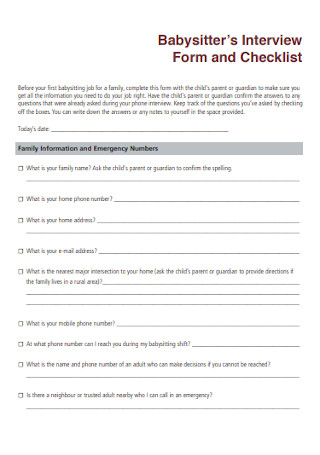
Babysitting Interview Checklist
download now -
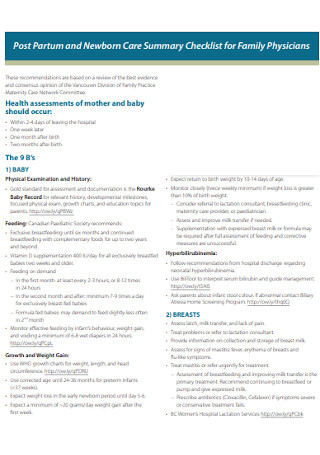
Newborn Care Summary Checklist
download now -
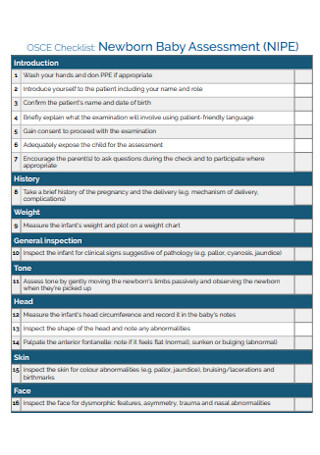
Newborn Baby Assessment Checklist
download now -
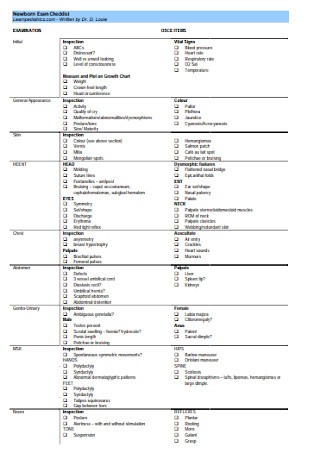
Newborn Exam Checklist
download now -
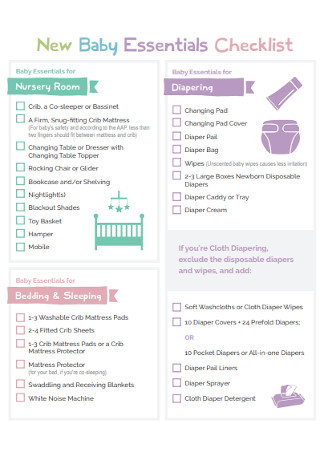
New Baby Essentials Checklist
download now -
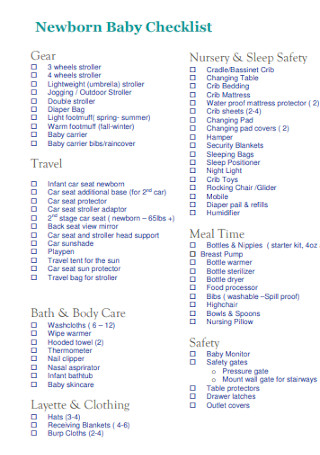
Newborn Baby Checklist Template
download now
FREE New Baby Checklist s to Download
20+ Sample New Baby Checklists
What Is A New Baby Checklist?
Item Suggestions for a New Baby Checklist
Benefits of Having a New Baby Checklist
How To Create a New Baby Checklist
FAQs
What does a baby need in the first 3 months?
What should you not buy for a baby?
What to check when a baby is crying?
What should babies wear overnight?
What size is best to buy for a newborn?
What Is A New Baby Checklist?
A new baby checklist is a comprehensive list of items needed to care for a new baby. Parents have the option to organize the list further by grouping similar items together.
According to the ranking website Ranker, many parents have personal preferences and favorites when it comes to baby brands. From baby food, strollers, diapers, to cribs, baby brands cover a wide range of products. Choosing the right brand for a newborn baby is important because parents want to make sure that the items and products are of good quality and will not pose any risk for the baby. The main factors when it comes to picking a good brand are comfort and safety. The top 10 baby brands on the Ranker list are the following: Avent, Baby Brezza, Gerber Products Company, Pampers, Graco, Disney, Johnson & Johnson, Chicco, Baby Trend, and Amy Michelle.
Item Suggestions for a New Baby Checklist
The sheer length of a typical new baby list can overwhelm some people. However, it is good to note that events like baby showers are good opportunities for parents to cross out some of the items on the list. A lot of well-meaning friends and relatives give gifts to celebrate a new baby’s arrival; so parents don’t need to stress too much about purchasing everything themselves. The examples listed below are common items that are usually included in a new baby checklist:
Benefits of Having a New Baby Checklist
We have all heard about the sleepless nights and exhausting hours that all parents go through when taking care of a newborn baby. Parenting is, after all, a full-time job. The nine months that a baby is in the womb can be an important window that parents can take advantage of. Because once the baby arrives, it will be much harder to schedule any personal time. This is especially true for parents or a parent raising their child without any help whatsoever. Still not convinced of having a new baby checklist? There are several benefits listed below that parents might want to consider:
How To Create a New Baby Checklist
Like any checklist or to do list, it’s pretty simple and straightforward. All you need is an adequate idea of what you want included in your list. The great thing about a new baby checklist is you can customize and personalize it in whatever way you want. But if you’re looking for something easier, there are a number of editable templates above. Simply choose one and tailor fit it to meet your needs. Otherwise, follow the steps below:
Step 1: Design a Creative Checklist
A simple checklist will do. Yet others prefer to tap into their creativity. Before listing your baby essentials down, you can add life to your checklist by creatively designing it or incorporating a theme with interesting colors, pictures, and borders. Pick any color that will reflect your personality and character. You can either design it yourself, use online applications, or download an existing template.
Step 2: List and Group the Items
It is easier to keep track of your items if you group them into categories. Listing items in random order can be quite confusing for some people. Batching helps organize your items into several sections. For example, play mats, teething toys, books, rattles, and stuffed animals can all be grouped under toys. Onesies, mittens, pants, socks, and infant gowns can be classified under clothing.
Step 3: Do Some Research
A baby’s needs during the first year can be a long list. First time parents will need a lot of advice and help. Sometimes, it’s not enough to list the items down. Try doing some research about the items you are unfamiliar with. You can also start canvassing prices to get better deals and early discounts. The more details, the better. If you have the time, add notes for those baby items you specifically want to focus on or are still undecided about. Browse online shops or go window shopping while you have the time. You can also bookmark your favorites so it is easier to refer back to it later.
Step 4: Keep Track of Purchases
Once you’ve started going over your checklist, gradually tick off the purchased or closed items. If you want an even more detailed list, take note of the store name and date of purchase. In case of any defects, you’ll want to keep the official receipts to return an item or to claim your refund.
FAQs
What does a baby need in the first 3 months?
The first few months of life are crucial. The new born baby will need all the nutrients and protection he or she can get. The main essentials are obviously milk and diapers. The right clothing is important too. A baby is still highly sensitive to their new surroundings, so it’s critical that they are protected from harsh temperatures, especially when sleeping. A good swaddle and blanket are basic necessities. For additional warmth, you can let the baby wear socks and mittens as well.
What should you not buy for a baby?
If you are caring for a newborn baby, you want to use natural and organic products if they are available. Avoid any harmful chemicals that can possibly irritate the baby’s skin. Perfumed or scented shampoo, detergent, body wash, or soap are not necessary. You are much better off sticking to fragrance-free or hypoallergenic baby products.
What to check when a baby is crying?
Crying is natural for all babies. Because of their inability to verbalize their needs, they have no other choice but to cry. If your baby is crying, check the usual signs such as hunger, a full diaper, diaper rash or discomfort, too much heat and humidity, etc. Sometimes, babies cry when they’re feeling bodily discomfort such as too much gas, stomach pains, or a fever.
What should babies wear overnight?
Depending on the climate, babies need to be kept warm and protected when they sleep during the night. For colder and temperate environments, make sure the head, feet, and hands are protected with a cap, socks, and mittens. For warmer climates, sleeveless onesies and lightweight clothing are preferable. Use a swaddle or blanket for additional layers and protection.
What size is best to buy for a newborn?
Most baby clothes come in standard sizes designed for 0-3 months, 3-6 months, and 6-12 months. Most newborns can fit in clothes labeled 0-3 months. Newborn babies that have a heavier weight at birth may fit in clothes intended for 0-3 months or 3-6 months.
Expecting a new baby can be both an exciting and nerve wracking experience. For new parents, the anxiety and excitement can even be greater. Having a baby checklist can ease these worries a little bit. Knowing that you have all you need to take care of a new baby can bring a certain level of consolation and peace. Try creating your own personalized baby checklist by choosing any of the sample templates above!
